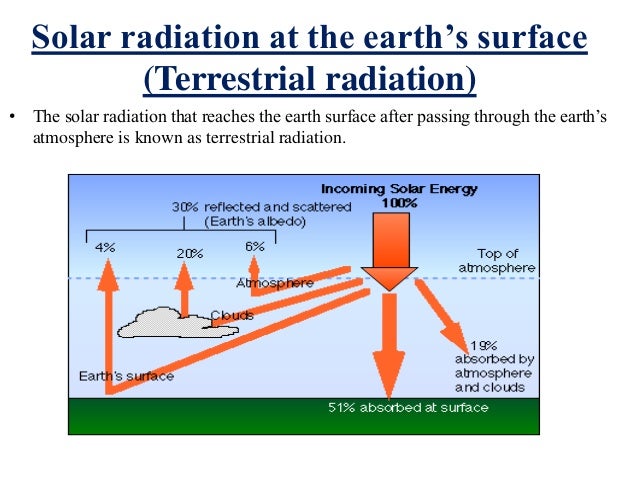All About Terrestrial Radiation
Terrestrial radiation refers to sources of radiation that are in the soil water and vegetation. Background radiation is defined by the international atomic energy agency as dose or dose rate or an observed measure related to the dose or dose rate attributable to all sources other than the ones specified.
 Climate Change 1 2 1 Heating And Cooling The Earth The Overall
Climate Change 1 2 1 Heating And Cooling The Earth The Overall
www.open.edu
Terrestrial radiation definition long wave electromagnetic radiation in the form of heat emitted from the earths surface and atmosphere.
All about terrestrial radiation. Every day we are exposed through our skin to external radiation from the earth. The major isotopes of concern for terrestrial radiation are potassium uranium and the decay products of uranium such as thorium radium and radonnote that terrestrial radiation includes an external exposure caused by these radionuclides. The sun heats rocks and soil which release trapped heat during the evening hours and various geologic and molecular activities also produce heat.
But most of the atmosphere isnt directly heated by solar radiation but rather by the terrestrial radiation that the planet itself emits. The difference between solar and terrestrial radiation is that all purely terrestrial radiation comes from fission of radioactive elements while all solar radiation comes from the fusion of hydrogen into helium. Apart from the energy generated by the decay of radioactive minerals in rock the energy that drives terrestrial radiation ultimately comes from the sun and it is a major factor in the study of global warming.
So a distinction is made between dose which is already in a location which is defined here as being background and the dose due to a deliberately introduced and. Terrestrial external radiation is created by the process of the natural breakdownor radioactive decayof radioisotopes in natural materials such as rocks soil vegetation. Terrestrial radiation is the energy released by the earth itself as opposed to solar radiation that it receives from the sun.
A2 terrestrial radiation sources. Our surroundings the water we drink the air we breathe and the food we consume all are contaminated with minute quantities of radiation emitting isotopes. This type of radiation is present in small quantities all around us and is more or less inescapable.
What is terrestrial external radiation. Pick a style below and copy the text for your bibliography. This difference in the source of radiation leads to other differences in the type of radiation.
Only a tiny portion of this power actually reaches the surface. Terrestrial external radiation is due to the decay of radioactive materials in the earth itself. All of these processes produce terrestrial radiation.
The sun emits a vast amount of energy which travels across space in the form of short wave radiation. In addition thermal radiation is a part of the energy emitted by the earth.
 Solar Energy
Solar Energy
www.slideshare.net
 Natural Background Radiation Canadian Nuclear Safety Commission
Natural Background Radiation Canadian Nuclear Safety Commission
nuclearsafety.gc.ca
 Mean Annual Of Terrestrial Radiation Toa And Albedo Tropical
Mean Annual Of Terrestrial Radiation Toa And Albedo Tropical
sandrolubis.wordpress.com
 Chapter 1 Introduction Terrestrial Radiation Effects In Ulsi
Chapter 1 Introduction Terrestrial Radiation Effects In Ulsi
www.oreilly.com
 Bmpmet3 Global Heating And Cooling Solar And Terrestrial
Bmpmet3 Global Heating And Cooling Solar And Terrestrial
www.coursehero.com
 Mean Annual Of Terrestrial Radiation Toa And Albedo Tropical
Mean Annual Of Terrestrial Radiation Toa And Albedo Tropical
sandrolubis.wordpress.com
 Solar Radiation Heat And Temperature
Solar Radiation Heat And Temperature
www.slideshare.net
0 Response to "All About Terrestrial Radiation"
Post a Comment